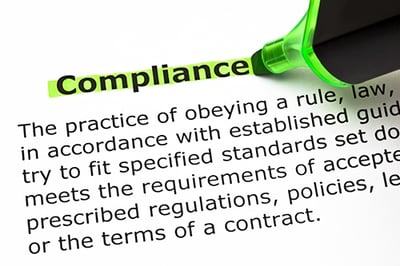What do driving ATVs, handling livestock pharmaceuticals and operating a dump trailer all have in common?
None of them has a formal OSHA safety standard.

But anyone who owns, manages or works on an ag operation knows full well that these activities also have something else in common.
They all present serious safety hazards anyway.
That’s why, if there were any aspect of compliance that employers should know firsthand, it’s arguably the OSHA General Duty Clause.
Look! Safety Hazards Are Everywhere.
The three mentioned here are just a sample of the dangerous ag-workplace activities that don’t have an OSHA standard.
That’s because, in spite of the comprehensive nature of OSHA regulations, it’s simply not feasible for the administration to anticipate and write a regulation for every possible safety-hazard scenario on the farm.
Granted, new standards are emerging and evolving on a continuous basis. But, in the meantime, for those without a standard, the General Duty Clause serves as a commonsense catchall, if you will, that essentially tells employers—“If you know it’s dangerous, you must provide safety training.”
So, How Do Employers Comply?
1. Identify all hazards—Again, think in terms of common sense. Look around, and make an assessment based on what you already know about your particular operation. To continue with the ATV safety example, if your business relies on them, are they ever operated at unnecessarily high speeds? Are they properly maintained? These are the kinds of points to include in your assessment.
2. Create documented safety protocols for those hazards—Just because you identify a hazard and, perhaps, even go so far as to address it, that won’t satisfy an OSHA inspector. Protocols must be documented. Is there a speed limit for ATVs on your property? Do you require operators to wear helmets? Document these requirements, and make them official policy. Make your employees aware of the policy, and enlist supervisors of those who drive ATVs to review the policy routinely.
3. Provide effective training—It’s sometimes said that common sense isn’t always so common. That’s why it’s important to cover all your bases. Every employee should receive training based on your assessments and the subsequent documented procedures on how to address the hazards you’ve identified. It makes for a safer workplace, and it can satisfy the General Duty Clause.
Showing Good Faith Goes a Long Way
Because the OSHA General Duty Clause is so … well, general … it’s understandable if the open-ended nature of it can raise questions. One of the guideposts to follow relates intentionally to the factors OSHA considers when determining a fine—good faith.
At the end of the day, this is often what best safety practices are all about. If agribusinesses make safety a top priority and foster a safety-centered culture that permeates throughout the business, good faith will not just be demonstrated—it will yield tangible results.
It’s important for agribusiness owners to prioritize hazard identification properly, show good faith in doing so and, most important, protect employees.
That’s how everybody wins.



